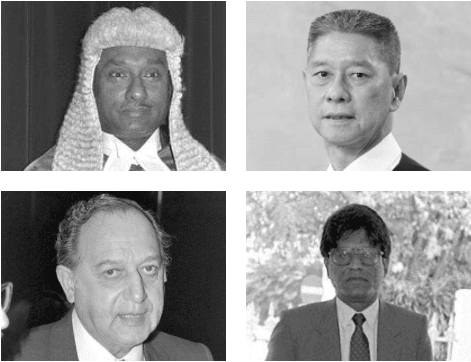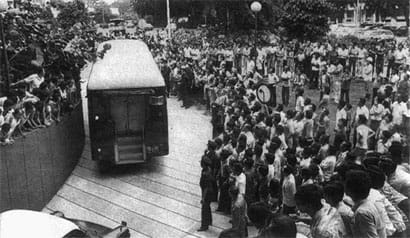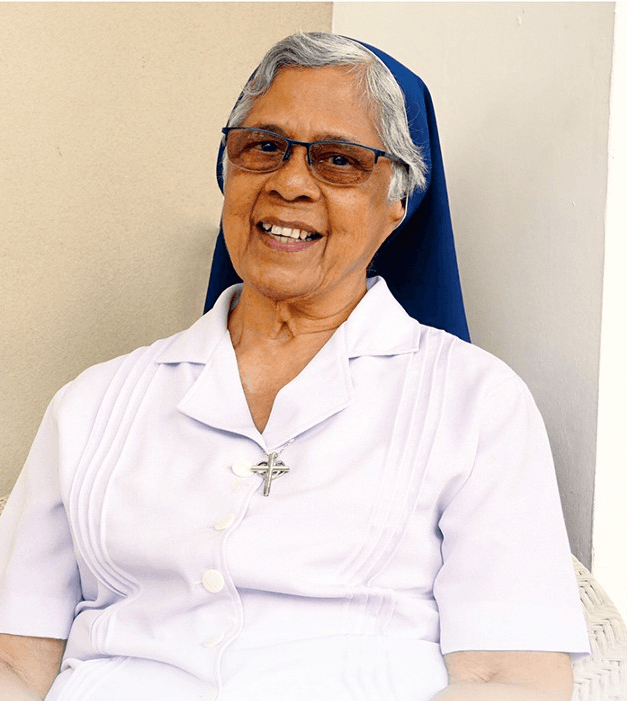The Toa Payoh Ritual Murders: A Case Of Insanity Or Was It Just A “Wayang”? (Part 2)
The first part of this article took you into the court room where the battle was fought between the defence and prosecution as to whether the murderers were of sound mind. The psychiatric defence failed but could there have been a different outcome?

BY FOO KIM LENG
“It was a very hard-fought trial and right to the end, it’s not certain which way the judges would go…” recalled Justice Choo Han Teck. “We were a little disappointed when we think back. And looking at Adrian and the two women… it is so troubling because the whole nature of the crime itself was indicative of a disturbed mind… It was a completely, bizarre, unnecessary, illogical killing of two children… no man in his right mind would have done this. But, well, unfortunately the psychiatric defence didn’t succeed.
Howard Cashin thought they could have won. “When I had long talks with my psychiatrist and heard what he had to say about his level of knowledge of what he was doing, I thought I had quite a chance.”
PUBLIC REACTION
Looking back, the main thing that stuck with Justice Sinnathuray was that “it was a terrible case. It didn’t deserve the publicity it received.”
Justice Choo remembered that “the court had to allocate numbers to the public and those who came in the morning were not allowed to come back in the afternoon so that the new bunch of people can go in and watch.”
The impact of this was not lost on both Adrian Lim and Glenn Knight. Justice Choo recalled, “He [Adrian Lim] was fully aware that it was a very highly publicised trial… he played to the gallery. He would say anything and everything so as to attract maximum attention and awe… Public opinion clearly was against him and you could see from the way the press reports were written everyday as the trial progressed, that one can’t help but feel that the weight of the public opinion, was a source of some pressure on the court. It was a pressure on the defence to some extent because we knew that in order to succeed, we really have to do much more than what we would have done in any other case. And of course, the prosecution realised that that was working to their advantage… Glenn Knight, in particular, will constantly use that to bolster his case.”
The bizarre stories that unfolded in court incited both fear and hatred. Glenn Knight recalled a witness who came to court wearing plenty of amulets and who would not even dare to look at Adrian Lim when he gave testimony. Howard Cashin received threatening calls and both he and Dr Wong were given police protection during the trial.

WOULD THE OUTCOME BE DIFFERENT TODAY?
Justice Choo felt that it was difficult to run a psychiatric defence in the 1980s. “I’m quite confident to say that they would have a much better chance today. And we didn’t have a really gruesome murder trial since the Pulau Senang murders… this case was the only one after that. I think the public wasn’t quite ready for this kind of things.
“But now, I think, this is a much more modern world, a much more informed world… psychiatry itself is much more developed. And if you look at what’s happening today, psychiatric illnesses are given more credence than during 1983.
“And also, from the trend I have noted as a judge in the last 15, 16 years, Government psychiatrists are more at ease concurring with defence psychiatrist’s views that various accused persons are not of sound mind. Up to that time in 1983, it was a very divided profession. People on the Government side (the Woodbridge) saw it as an almost defensive mechanism to disagree everything with the private psychiatrists.
“More importantly, until [Dr R] Nagulendran came along, Wong Yip Chong was for many years the only private psychiatrist testifying in criminal trials. That itself had a problem because he then appeared as if he was too ready to proclaim people of unsound mind and so in that sense, he sort of lost quite a lot of credibility. But, unfortunately, there were few psychiatrists people could turn to, or who were willing to come and testify in court as Yip Chong did.”
Dr Wong who was assigned the case for a token of $100 a day said, “I never reject a case. At that time, there were very few of us… They ask me to help, you don’t want to say no just because he’s got no money. I like this work because it’s so fascinating…you’re going to [the] front seat of a murder incident which always captivates the imagination of people.”
LAST DAYS ON DEATH ROW
Adrian Lim was hanged on 25 November 1988. At death row, he had asked to see his lawyers and Dr Wong. “He had already converted to Christianity, a bit more sober,” recalled Dr Wong. He said, ‘I want to donate my eyes, my ears, my mouth.’ We could see how he was still very grandiose.”
Justice Choo recalled his last meeting with Adrian. “I remember Adrian Lim’s last words to me as I got up to leave. He called me back and I got back to the netting, and he said to me, ‘Look, can you do me a favour and will you promise to write a book on the story of my life?’ I thought he was not serious. At that time, it didn’t occur to me to take it seriously anyway. So I said, “Sure.”
And of course, I really should have been more serious about that. But it’s not because I was being dishonest to him. Now looking back, it just didn’t strike me that this man might be serious about it. … so I said, ‘Yes.’ And to my surprise, he then stuck his little finger through the gap in the wire netting and he said again, aloud, ‘Promise!’ And that’s when I realised he wanted me to link his little finger, which I did. And so he said, ‘So you’ll write my book?’
One of the last persons to see Adrian Lim alive was Sister Gerard Fernandez. She had earlier contacted the Director of Prisons to ask to see Catherine Tan who had been a parishioner at the Church of Risen Christ at Toa Payoh. Sister Gerard would visit both Catherine Tan and Hoe Kah Hong right up to their execution. In her oral history interview, Sister Gerard recalled, “I was visiting them every week for seven years… [Adrian] refused to see anybody… But the girls and myself… we prayed for him. They had come to a stage where they had forgiven him.

“On the last week of his life… who should I meet but his first wife… she came to the prison to see him. He never expected her [to visit]. And we prayed very hard for Adrian to ask for the priest. On Wednesday as we were praying, the officer came and tapped Father [Doro], ‘He’s asking for you.’ So when Father went over, he looked at him and with his Bible and through the bars, he tapped him on the shoulder and said, ‘What took you so long?’ And Adrian made his confession, asked God for forgiveness.
“It was so beautiful because his son was in NS [National Service], a wonderful boy. And he must have been only about 11 or 12 when he read in the newspapers about what his father had done; that time probably it didn’t register. Now he would have seen it when the trial came, all that dirt that was coming up. Yet, he said, ‘He’s my dad.’ And together they received the Eucharist. Now what a beautiful reconciliation.”
The oral history interviews referenced above are part of The Development of The Singapore Legal System, a joint oral history programme by SAL’s Legal Heritage Committee and the Oral History Centre, National Archives of Singapore. Listen to:
· Justice Sinnathuray’s interview
· Mr Howard Cashin’s interview
Sister Gerard Fernandez’s interview
Justice Choo Han Teck’s oral history interview will be released at a later date.

